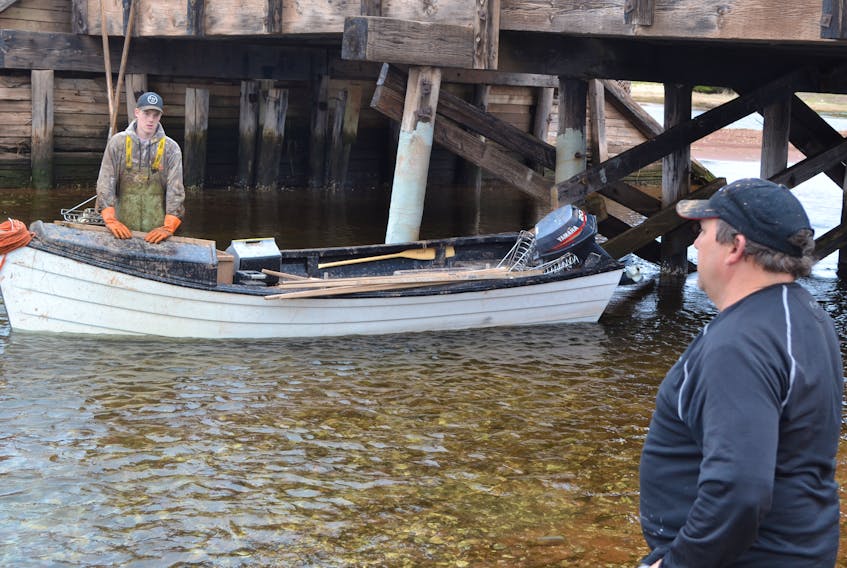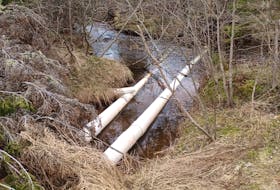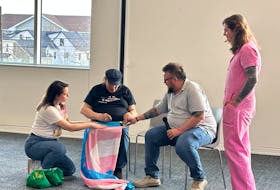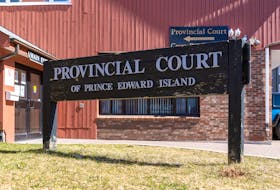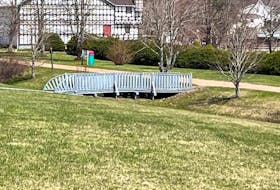MILL RIVER EAST, P.E.I. — The president of the P.E.I. Shellfish Association says he’s getting a fairly consistent message from fishermen this spring: oyster catches are down.
Kenneth Arsenault said there were also several reports after the spring fishery opened on May 1 of weak oysters
Catching up with Tanner Ramsay, tonging near a bridge on the Mill River recently, Arsenault heard that issues with weak oysters already seem to be lessening.
Arsenault suspects the oysters might have been impacted by an unusually long winter and might not have started feeding before the first sets of oyster tongs pulled them from their beds.
Once the sun hits them, he said, the weak oysters would start to open up.
With the water warming up, the association president believes the oysters have started to feed and are rebounding.
While the long winter might explain the quality at the start of the season, Arsenault believes something more preventable than a long, cold winter is responsible for the reduced catches. He says some fishermen are reporting their catches are off almost 50 per cent from last year.
High nitrate levels
The association president believes high nitrate levels in Island rivers are contributing to what had been a gradual decline in recent years but one that appears more pronounced this spring.
Nitrates-fed sea lettuce grows so thick in some rivers, Arsenault suggests, that the annual spat run is being impacted.
Some of the spat doesn’t get to float up through the water column because of the bed of sea lettuce on top of the oysters, and the spat that does make it to the surface might not find anything solid to attach itself to when it settles back to the bottom.
Arsenault hopes to soon discuss the association’s concerns with the Island’s new minister of Fisheries, Jamie Fox.
He said he wants to impress upon the minister the need to reduce the nitrate loading that’s fueling the growth of the sea lettuce.
“It’s there, and the government knows it’s there,” he says of the nitrates. Cleaning it up, he admits, could be a long process.
“The Island is such a beautiful place to live and to work, but we have to start looking after it,” he insists.
“It has to change. Not just for the fishery, but people in general, for the drinking water.”
On a more short-term basis, Arsenault is toying with the idea of seeking government funding for a de-silting project.
He would first need to consult the membership, he said, before officially requesting a de-silting project. He knows membership had mixed reviews of desilting the last time it was tried. Since the drags were last deployed, he said, the sea lettuce growth has increased and oyster catches have continued to decline. He believes, on the right tide, a drag could lift the smothering sea lettuce from the bottom and flush it out of the rivers.

